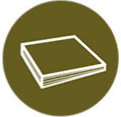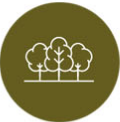DHA eNews - U.S. Imports Of Hardwood Plywood Grow By 37%
In the previous issue, we reported on the Department of Commerce's recent finding that U.S. imports of hardwood plywood from Vietnam circumvented duties. Recent import data highlights the potential impact of this ruling; as you'll see, imports of hardwood plywood from Vietnam are up by more than 90% this year through June. Now, most of these imports will be subject to tariffs of more than 200% as a result of the Department of Commerce's ruling. Imports from Russia—the U.S.’s third largest source of hardwood plywood—have slowed dramatically since tariffs were imposed in April. Imports from Russia were up 66% through March, but up only 2% through June.
Imports from China and Vietnam have also been a big issue for our customers. Cabinet manufacturers have stepped up their advocacy for fair trade in cabinets and in support of the more than 250,000 workers in the industry, rallying a bipartisan group of policymakers to support their efforts after a recent setback at the Department of Commerce.
If you have questions or comments, contact me. I look forward to hearing from you.

Keith A. Christman, President
Decorative Hardwoods Association

Total U.S. imports of hardwood plywood grew by 37% in volume and nearly 77% in value from January through June, as compared to the same period last year. Indonesia is the number one source of U.S. imports, with volume up by nearly 41%. Vietnam was the second largest source, with imports soaring an astounding 93% in volume. Russia is still the third largest source, with volume up by about 2%.
U.S. imports of multilayered wood flooring are up by 30% in volume and 32% in value in the first six months of this year vs. the same period last year. Now, Vietnam and Cambodia are the two largest sources of U.S. flooring imports. China has dropped from first to third place.
After a ruling that overturned the previous finding that cabinets from Vietnam are circumventing duties, the cabinet industry, backed by Congress, urged the Department of Commerce to give "full and fair consideration" to their claims. In their August 1 letter to Secretary Gina Raimondo, members of Congress asked her to "use all existing trade remedy laws to their fullest extent in order to fight back against China's unfair trade practices."
China's imports of logs and lumber dropped by 50% between Q4 2021 and Q1 2022. China's weak economy in Q1 was due to COVID-related shutdowns. Imports from Russia to China fell significantly, from 800,000 cubic meters in Q4 to a paltry 80,000 cubic meters in Q1.
The Department of Commerce, in its third annual review of softwood lumber imports from Canada, lowered the tariffs from 17.99% to 8.59%. NAHB and other homebuilding associations have been pushing for reductions in tariffs to support more affordable housing.
Roseburg is focusing on strategic land acquisition and management. Phil Adams has been selected to lead these efforts in the newly created role of director of real estate and strategic development.
Kellie Ballew, vice president of global sustainability and innovation, has been named a finalist for the 2022 Reuters Events Responsible Business Awards in the Sustainability Trailblazer category.
DHA is committed to making it easier and less expensive to specify and buy decorative hardwood products. Free guides and standards from DHA include our 2022 Where to Buy Membership Directory as well as the American national standards for hardwood and decorative plywood, engineered wood flooring, and legal timber due diligence.
The Virginia Department of Forestry has announced new grants to support more tree planting this fall and next spring. Those who are eligible to apply include civic groups, community and neighborhood associations, local governments, tribal organizations, nonprofits, and more.
So far this year, nearly 1.6 million acres across Europe have been decimated by fires. The sheer scale of the destruction caused by wildfires will be the worst since records began in 2006.
The Asian longhorned beetle has already been found in Iowa. The destructive pest feeds on ash, birch, elm, sycamore, maple, poplar, and willow and has no real natural predators. The beetle is easy to recognize by its black and white antennae.
Which types of trees absorb the most carbon?





